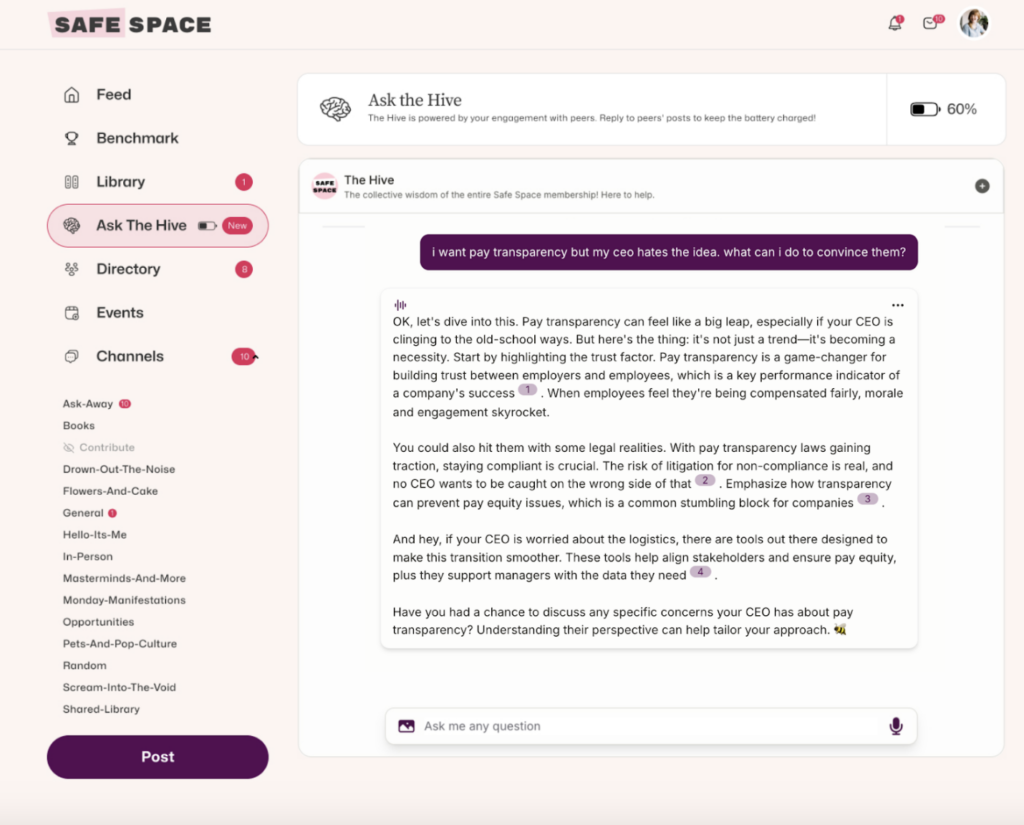
How can one “change” the mindset of very-very senior employees positively?
Context: We have tenured employees that have been “used to doing things a certain way” – always. New management, new rules are being implemented and we are faced with a wall. Our company has about 200 employees and it’s in the manufacturing sector.
Heather Weidekamp, Senior People Professional:
Are the highest levels of leadership open to change? If so, I would bring them into the conversation to help influence the “very-very senior employees.” BUT, there are always ways to sway an individual away from the norm – you just have to find out what their motivations are and appeal to those. I find that this “used to doing things a certain way” mindset is rooted in a lack of understanding around the change. One of the most important change management tools is education – go back to the beginning, learn about why things have been done “that” way and ask meaningful questions about the current process, including what roadblocks there are. This can help them start to see the need for change on their own and make it easier for you to introduce the change as an answer to their roadblocks. Good luck!
Lia Seth, People Operations Director at Cylinder:
Completely agree with Heather’s take that finding out the motivations of those tenured employees is key to influencing and encouraging the change you want to see. For example, I’ve counseled a senior manager who strongly valued efficiency in their team. They were used to being very involved in the hiring process, and I helped them see that their insistence on sitting in every interview, which made sense when they had only 3 direct reports, caused delays and lower efficiency after the team grew 10x. Other leaders may not be open to new processes unless they see hard numbers and data. Once you know what will get through to them, you can build a much stronger case for change.
Jessie Fields, Director of Talent Development & DEI at C2FO:
This dynamic is very common — change is hard for everyone! In my experience, people are most often resistant to change because they fear one or a combination of the following… 1) a loss of connection, 2) a loss of control, 3) a loss of competency, or 4) a loss of choice.
The best thing leaders can do to bring people along in the change is getting to their motivation (exactly like Heather and Lia described) and the fear that may be underneath it.
If someone fears losing competency, ask them to take a lead role in training others on the new task. Boom! They’re now an expert. If someone fears losing control, ask for them to provide their input on new requirements based on what’s been successful and unsuccessful in the past. If someone fears losing their choice, give them choices where you can!
Reassure your leaders that moving people through resistance takes time. The people that come around will build trust and become advocates for the change! And the people that don’t will likely leave the org one way or another.
AnnE Diemer, HR Consultant:
I love throwing out the Grace Hopper quote, “The most dangerous phrase in a language is, ‘We’ve always done it this way.’” Especially coming from the person who really pushed computer science forward, I think it’s a helpful reminder that growth *requires* change.
I also agree with the other comments here. Recently, I was working with an employee who is “We’ve always done it this way” Royalty. And I asked them, “You’re our expert in XYZ, when you take a step back and see this whole process, do you really think it’s working? What do you recommend as our leader in this subject?” By emphasizing their experience and grounding them in the big picture, I think it helped us zoom out a bit and we did find a solution! (Plus, they felt respected which ensured they really listened and engaged.)
Ilona Jurkiewicz, President, Americas at Cappfinity:
I think to have anyone change (regardless of tenure, seniority, background, etc), it’s about the “a-ha moment” or insight, and a compelling reason on why they would want to change. If you can successfully make one of those happen, you increase your chances. But if you can create a personal moment of reckoning, and give a strong personal reason why they should, you’ll succeed.
JOIN 150K+ HR LEADERS
Get insights, learnings, and advice on how to build companies and cultures that people actually love.
No spam. Unsubscribe any time.

I work for a start-up that has been stuck in the pre-development phase for 6 years (I have only worked there for 12 months). Our CEO/Founder is primarily responsible for the hangups and multiple culture crashes in the past. It’s impossible to touch upon all of the issues in one sentence, but how can lower management influence meaningful (and productive) change to a stuck process? We have an amazing team who all work so hard, we just want the best for the org and mission.
Context: 9 full-time permanent staff, 4 seasonal farm crew, 6 upper management. Funding is secured by a sole investor. Org will eventually have closer to 70-80 employees once we’re open and operating. We are in the agriculture and hospitality industry.
Bridget Martin, Head of People at Smart Streets VR:
Has lower management discussed presenting ideas to the CEO to help move things forward? Basically pitching the CEO on their own business plan? For example, lower management can work together to build a pitch deck with a 6, 12, 18, 24 month plan, with proposed outcomes at each milestone. Start the deck off reiterating the CEO’s own stated vision, add a clear path to reach that vision, and don’t be afraid to address perceived outcomes if no change is made, i.e. “if we continue with the current status quo, morale will continue to remain low and turnover will increase.” Good luck!
Sondra Norris, OD/OE Consulting:
I’d add to Bridget’s great suggestion: have lower management create a post-mortem of the critical path for the last XX number of years (what we planned and what actually ended up happening and why). Include:
– Here is what the goals were
– Here is what was achieved / not achieved and what happened
– Here are remaining obstacles
– Then present the 6, 12, 18, 24 month plan
Be clear that this is to address concern for overall failure to achieve whatever is desired – but not to 100% call out the CEO/Founder as to blame, except where it is really justified (delay on decisions; changing their mind; how, where, and why lower management couldn’t move forward).
Also be clear about lower management’s commitment to and passion for this business, how they want it to succeed.
Ask questions:
– What was missing at the time were supposed to cross XYZ milestones?
– What is the source of resistance/hesitation/concern?
– What do we need, what aren’t we thinking of, how can we commit to the new proposed plan?
Kathy Bryan, EVP at Electives:
Everyone has the potential to lead and influence. One of the best ways lower management can create change is by asking the right questions.
– What is our objective?
– Do we think our current approach will get us there?
– What is working?
– What do we need to iterate on?
If lower management doesn’t feel they have the voice to say how things should be done, they can take the lead by steering the conversation and helping upper management reach the right conclusions.


